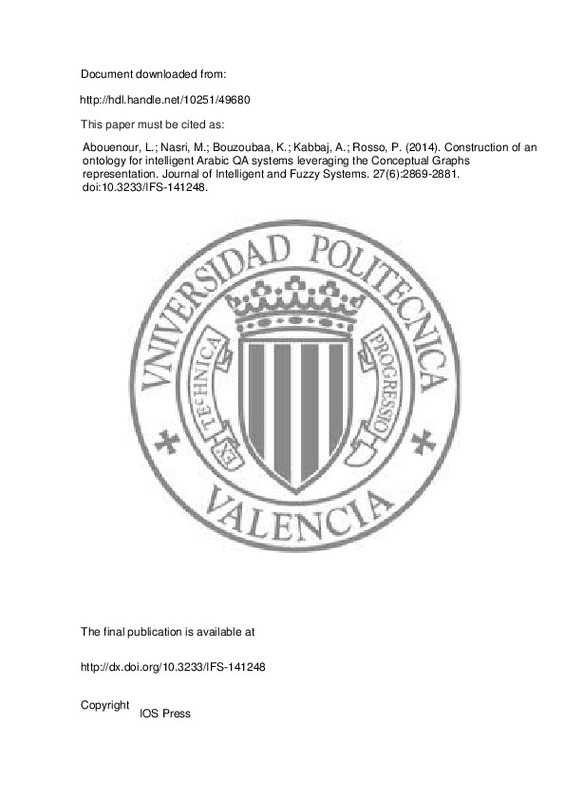JavaScript is disabled for your browser. Some features of this site may not work without it.
Buscar en RiuNet
Listar
Mi cuenta
Estadísticas
Ayuda RiuNet
Admin. UPV
Construction of an ontology for intelligent Arabic QA systems leveraging the Conceptual Graphs representation
Mostrar el registro completo del ítem
Abouenour, L.; Nasri, M.; Bouzoubaa, K.; Kabbaj, A.; Rosso, P. (2014). Construction of an ontology for intelligent Arabic QA systems leveraging the Conceptual Graphs representation. Journal of Intelligent and Fuzzy Systems. 27(6):2869-2881. https://doi.org/10.3233/IFS-141248
Por favor, use este identificador para citar o enlazar este ítem: http://hdl.handle.net/10251/49680
Ficheros en el ítem
Metadatos del ítem
| Título: | Construction of an ontology for intelligent Arabic QA systems leveraging the Conceptual Graphs representation | |
| Autor: | Abouenour, Lahsen Nasri, Mohamed Bouzoubaa, Karim Kabbaj, Adil | |
| Entidad UPV: |
|
|
| Fecha difusión: |
|
|
| Resumen: |
The last decade had known a great interest in Arabic Natural Language Processing (NLP) applications. This interest is
due to the prominent importance of this 6th most wide-spread language in the world with more than 350 ...[+]
|
|
| Palabras clave: |
|
|
| Derechos de uso: | Reserva de todos los derechos | |
| Fuente: |
|
|
| DOI: |
|
|
| Editorial: |
|
|
| Versión del editor: | http://dx.doi.org/10.3233/IFS-141248 | |
| Código del Proyecto: |
|
|
| Agradecimientos: |
The work of the last author was carried out in the framework of the WIQ-EI IRSES project (Grant No. 269180) within the FP 7 Marie Curie, the DIANA APPLICATIONS - Finding Hidden Knowledge in Texts: Applications (TIN2012-3 ...[+]
|
|
| Tipo: |
|







![[Cerrado]](/themes/UPV/images/candado.png)


